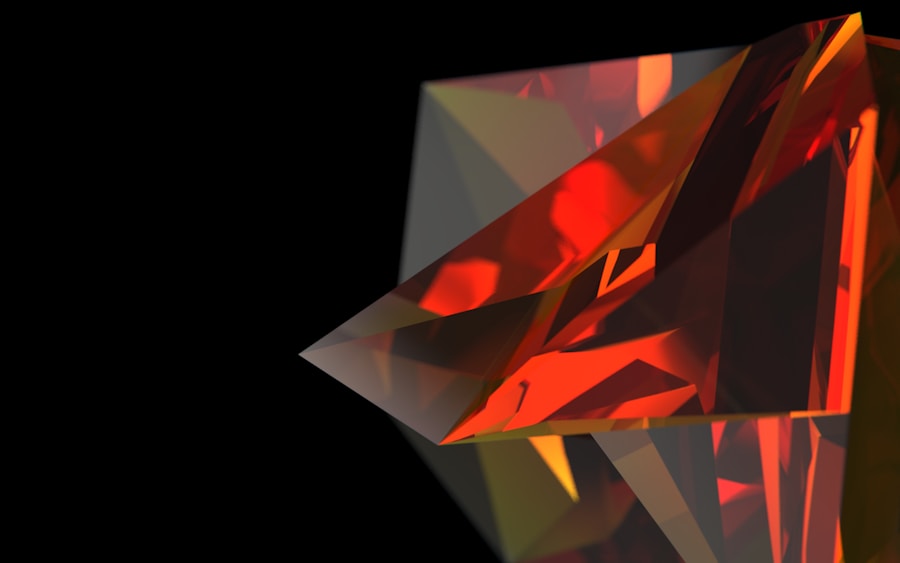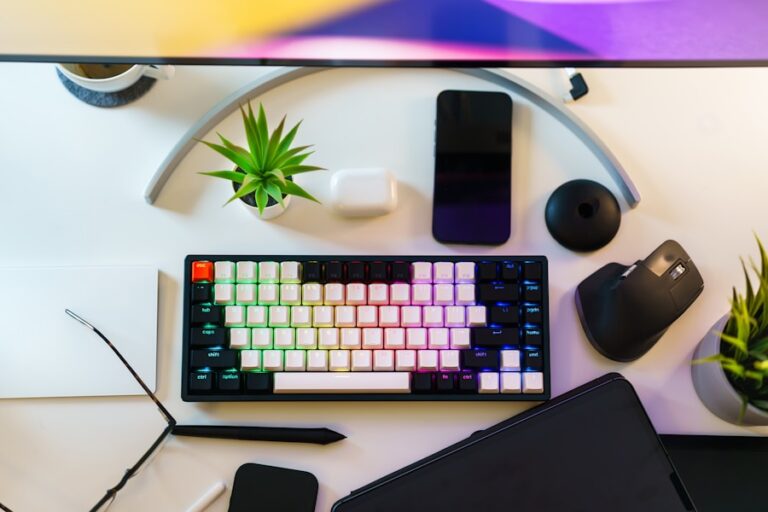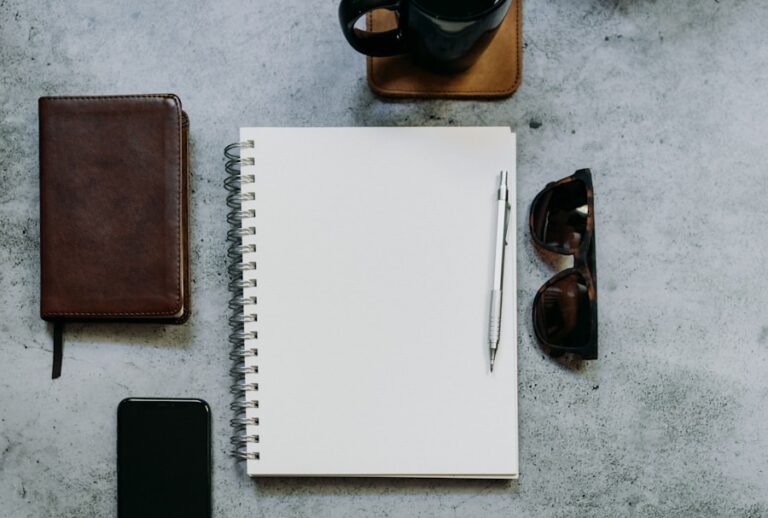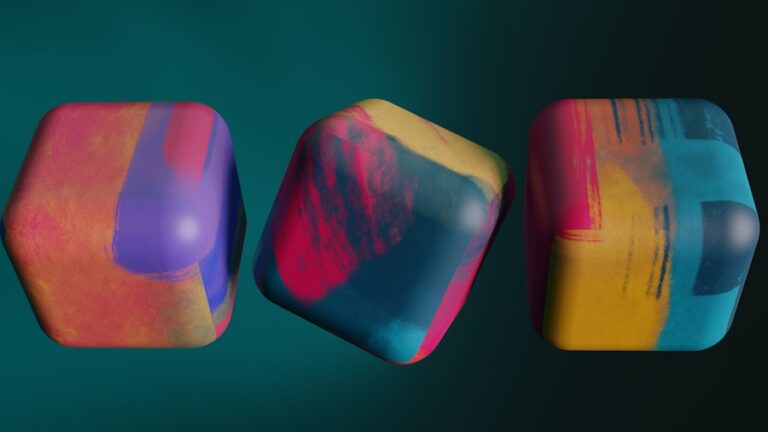Mastering the Art of Digital Composition: Tips and Tricks for Beginners
Digital composition is the process of creating visual content using digital tools and techniques. It involves combining various elements such as images, text, and graphics to convey a message or tell a story. Understanding the basics of digital composition is essential for creating compelling and impactful visual content. One of the key elements of digital composition is the use of visual hierarchy, which refers to the arrangement of elements in a way that guides the viewer’s eye through the composition. This can be achieved through the use of contrast, scale, and placement of elements. Another important aspect of digital composition is the use of color theory, which involves understanding how different colors interact with each other and how they can be used to create a certain mood or evoke a specific emotion. Additionally, understanding the principles of design, such as balance, rhythm, and proportion, is crucial for creating visually appealing compositions.
In digital composition, it is also important to consider the use of typography, which involves the selection and arrangement of fonts and text within a composition. The choice of typography can greatly impact the overall look and feel of a composition, and it is important to consider factors such as legibility, hierarchy, and alignment when working with text. Furthermore, understanding the principles of visual storytelling is essential for creating engaging and impactful compositions. This involves considering elements such as narrative structure, pacing, and visual flow to effectively communicate a message or tell a story through visual content.
Choosing the Right Equipment for Digital Composition
When it comes to digital composition, choosing the right equipment is crucial for achieving high-quality results. The first and most important piece of equipment for digital composition is a reliable camera. Whether you are using a DSLR, mirrorless camera, or even a smartphone, having a camera with good image quality and control over settings such as aperture, shutter speed, and ISO is essential for capturing high-quality images. In addition to a camera, having a selection of lenses can greatly expand your creative possibilities in digital composition. Different lenses offer different focal lengths and perspectives, allowing you to capture a wide range of subjects and scenes with varying levels of depth and detail.
In addition to a camera and lenses, having a computer with sufficient processing power and memory is essential for working with digital images. Whether you are using photo editing software, graphic design programs, or video editing tools, having a computer that can handle the demands of these applications is crucial for achieving professional results. Furthermore, having a high-quality monitor with accurate color representation is important for ensuring that your digital compositions look their best. Finally, investing in a reliable storage solution such as external hard drives or cloud storage is essential for backing up and organizing your digital files.
Exploring Different Techniques for Digital Composition
There are countless techniques that can be used in digital composition to create visually compelling and impactful content. One popular technique is the use of layering, which involves combining multiple images or elements to create a cohesive composition. This can be achieved through the use of photo compositing, where different elements from separate images are combined to create a new scene or concept. Another technique is the use of blending modes, which allow you to blend different layers together in various ways to create unique and interesting effects. Additionally, using masking techniques can help you selectively reveal or hide parts of an image or element within a composition.
Another important technique in digital composition is the use of color grading and correction. This involves adjusting the color balance, saturation, and contrast of an image to achieve a desired look or mood. Whether you are working with photographs or digital artwork, understanding how to effectively use color grading and correction techniques can greatly enhance the visual impact of your compositions. Furthermore, experimenting with different types of lighting can also greatly impact the overall look and feel of a digital composition. Whether you are working with natural light, studio lighting, or artificial lighting effects, understanding how to manipulate light can greatly enhance the visual impact of your compositions.
Utilizing Composition Rules and Guidelines
In digital composition, there are several composition rules and guidelines that can help you create visually appealing and impactful content. One important rule is the rule of thirds, which involves dividing an image into nine equal parts using two horizontal lines and two vertical lines. Placing key elements along these lines or at their intersections can create a more balanced and visually appealing composition. Another important guideline is the use of leading lines, which involves using lines within an image to lead the viewer’s eye towards a specific focal point or subject. This can help create a sense of depth and movement within a composition.
Additionally, understanding the concept of negative space can greatly impact the overall look and feel of a digital composition. Negative space refers to the empty or open areas within an image that surround the main subject or focal point. Using negative space effectively can help create a sense of balance and harmony within a composition. Furthermore, understanding how to effectively use framing within a composition can help draw attention to the main subject or focal point. Whether you are using natural elements such as trees or archways, or creating framing effects through cropping or layering, understanding how to use framing can greatly enhance the visual impact of your compositions.
Experimenting with Different Styles and Perspectives
One of the most exciting aspects of digital composition is the ability to experiment with different styles and perspectives to create unique and impactful visual content. Whether you are working with photography, graphic design, or digital illustration, there are countless styles and perspectives that you can explore to create visually compelling compositions. One popular style in digital composition is minimalism, which involves using simple and clean design elements to create visually striking compositions. This style often focuses on negative space, bold typography, and limited color palettes to create impactful visual content.
Another popular style in digital composition is surrealism, which involves creating dreamlike or fantastical compositions that challenge reality and conventional perspectives. This style often incorporates elements such as unexpected juxtapositions, distorted proportions, and imaginative concepts to create visually captivating content. Additionally, exploring different perspectives in digital composition can greatly expand your creative possibilities. Whether you are experimenting with different camera angles in photography or exploring unique viewpoints in graphic design or illustration, understanding how to effectively use perspective can greatly enhance the visual impact of your compositions.
Enhancing Your Digital Composition with Post-Processing
Post-processing is an essential part of digital composition that involves editing and enhancing digital images to achieve a desired look or effect. Whether you are working with photographs, digital artwork, or graphic design elements, post-processing allows you to fine-tune your compositions to achieve professional results. One important aspect of post-processing is color correction and grading, which involves adjusting the color balance, saturation, and contrast of an image to achieve a desired look or mood. This can greatly impact the overall visual impact of a composition.
Another important aspect of post-processing is retouching and manipulation, which involves removing imperfections or unwanted elements from an image, as well as adding or enhancing certain elements to achieve a desired effect. Whether you are working with portraits, landscapes, or digital artwork, understanding how to effectively retouch and manipulate images can greatly enhance the visual impact of your compositions. Additionally, experimenting with different filters and effects in post-processing can greatly expand your creative possibilities in digital composition. Whether you are working with vintage effects, artistic filters, or special effects such as blur or distortion, understanding how to effectively use filters and effects can greatly enhance the visual impact of your compositions.
Sharing and Receiving Feedback on Your Digital Composition
Once you have created your digital compositions, it is important to share them with others and receive feedback in order to improve your skills and grow as a digital artist. One way to share your work is through social media platforms such as Instagram, Facebook, or Behance, where you can showcase your compositions to a wide audience and connect with other artists and creatives. Additionally, participating in online communities and forums dedicated to digital art and design can provide valuable opportunities for sharing your work and receiving constructive feedback from other artists.
In addition to sharing your work online, seeking out mentorship or guidance from more experienced artists can provide valuable insights and feedback on your digital compositions. Whether you are attending workshops, taking online courses, or seeking out one-on-one mentorship opportunities, receiving feedback from experienced artists can help you identify areas for improvement and develop your skills as a digital artist. Furthermore, participating in exhibitions or art shows can provide valuable opportunities for showcasing your work to a wider audience and receiving feedback from art professionals and enthusiasts.
In conclusion, digital composition offers endless possibilities for creating visually compelling and impactful content through the use of various techniques, styles, and perspectives. By understanding the basics of digital composition, choosing the right equipment, exploring different techniques, utilizing composition rules and guidelines, experimenting with different styles and perspectives, enhancing your compositions with post-processing, and sharing and receiving feedback on your work, you can develop your skills as a digital artist and create visually stunning compositions that resonate with your audience. Whether you are working with photography, graphic design, illustration, or digital art, embracing the creative potential of digital composition can lead to endless opportunities for artistic expression and growth.






